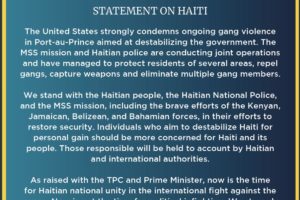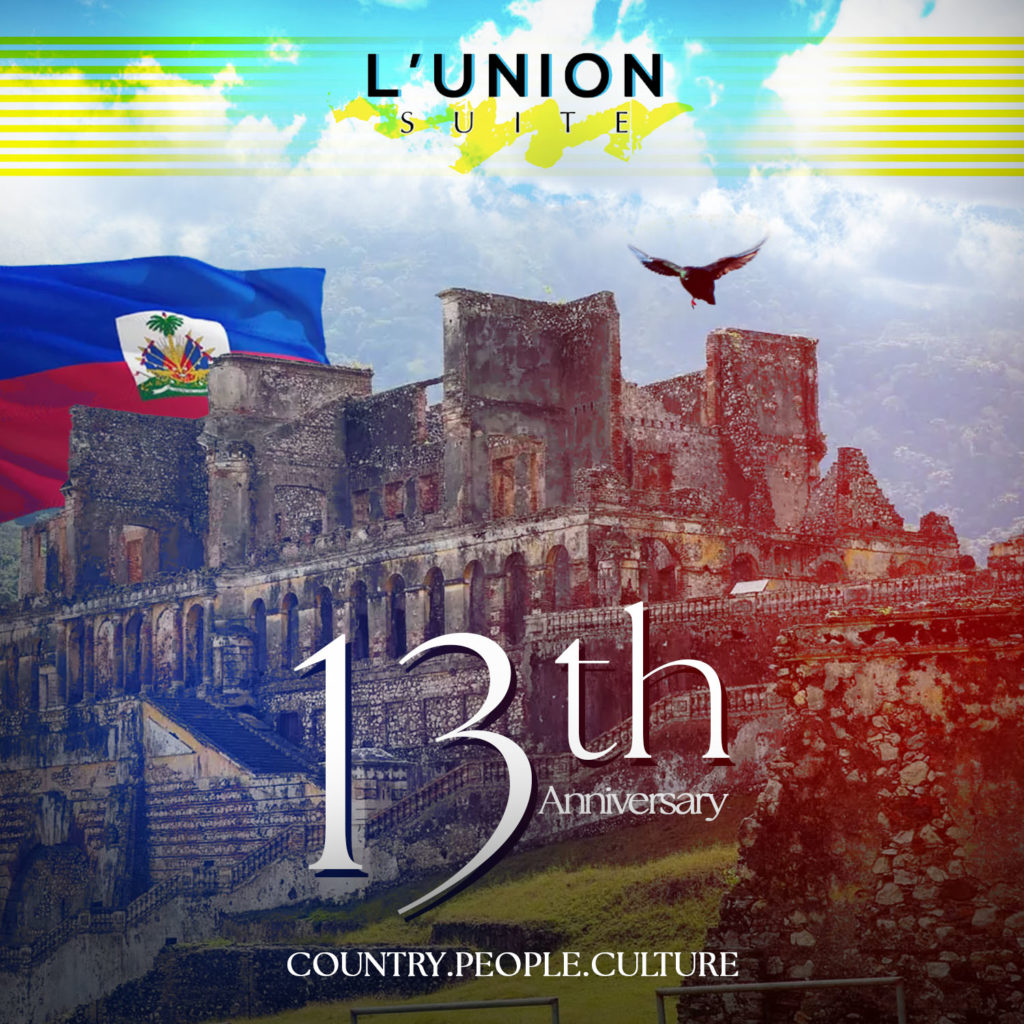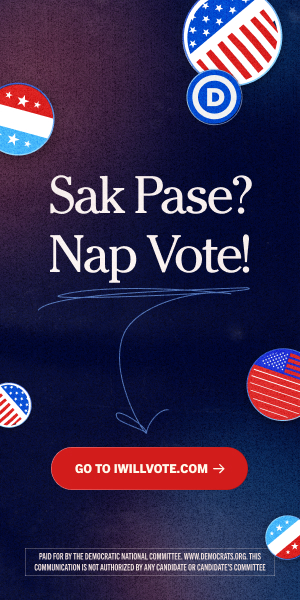
Today is Haitian Flag Day and while everyone is celebrating and posting pictures of their flag, how much do you know about the history behind it?
According to This great article
For a country’s citizens, the national flag is indisputably a symbol of general pride. They would consider any offense to their flag to be an offense to their country. Beyond being an icon though, a flag’s origin can often say a lot about a nation’s social make-up or history. Haitians feel no different and even reserve a special day to honor it. That day is May 18th.
In Haiti, Flag Day is a major national holiday celebrated with great fanfare on the grounds of the national palace. Haitians in the Diaspora also observe Flag Day. In The United States for example, teenagers whether in High School give homage to the red and blue by carrying it around with them or on their persona for at least a week. Haiti’s flag’s origin is tightly linked to a history of struggle for freedom.
In the early days of revolt in St. Domingue, the slaves did not have a flag. However, they did notice that their former masters were using the French Flag. From 1791 to about 1793, the revolt became more widespread and gave rise to a number of large groups still fighting independently. In those times, each main leader would use any piece of cloth as a flag. Slowly the slave movement found some synergy and came to follow the leadership one main person: Toussaint Louverture. Realizing that you cannot fight three enemies at the same time, Toussaint and the army of revolted slaves fought successively for the Spanish against the French (1793-1794), for the French against Spain and England (1794-1802) and ultimately against France. As such, he carried the color of whichever European power he was fighting for. He later realized that it was silly to use the same flag as the enemies. He then invented his own flag, which was a white piece of cloth with a Negro head to represent the blacks.
After Toussaint’s deportation, The Indigene Army went back to the French flag for a while. A little explanation is needed here: The French flag, as we know it now is a product of the French Revolution. It was made up of Red and Blue, the colors of the City of Paris, and a band of white representing the monarchy (La Nation, la Loi et le Roi –). On the white portion of the flag was the emblem of the French Republic. The Revolution of St. Domingue was in some ways motivated by the French Revolution and for years, the masses main objectives were for freedom and better treatment. To them, the French Flag represented the ideals of Liberty and Fraternity. They hoped that those same principles would be applied to them, non-whites According to Thomas Madiou (1814-1884), a renowned historian of the 19th Century; they also saw in that flag a symbol of blacks, whites and mulattoes living in harmony. Therefore, carrying the French was not stupidity, but rather an expression of their ideals.
As time went on though, a break with France seemed inevitable and to symbolize their resolve of never fighting for the metropolis again, they had removed the French arms from the blue white and red flag they were using. As early as February 1803 however, Petion, leader of the mulattoes and Dessalines had decided to create a unique flag to represent their troops. Thus, starting with the French Flag made up of three blue, white and red bands placed vertically respectively; Dessalines removed the white and created the first unofficial flag with blue and red bands placed vertically. By so doing, he also wanted to impart on the French the message that they had lost that colony forever. To them the blue symbolized the mulattos and the blacks while the red symbolized their blood. While this flag was observed in most part of the country; Cangé, a general in the south used a black and red flag instead.
By 1803 as we saw, the leaders of the free slaves and the men of color had decided to fight for the creation of an independent nation.Before marching on Port-Republicain (Port-au-Prince’s name at that time) Dessalines and Petion needed to make a strong statement. On May 18, 1803, in the city of Arcahaie, not far from Port-au-Prince, they agreed on an official flag, with blue and red bands placed vertically. Blue and red placed vertically respectively. A lady named Catherine Flon sewed Haiti’s first flag.
On Independence Day however, January 1st 1804, the flag was modified again. The Blue and Red bands were placed horizontally this time, with the blue band on top of the red band. This was the first flag of the independent republic. In 1805, shortly after Jean-Jacques Dessalines proclaimed himself emperor, the Haitian flag color was changed to black and red bands placed vertically respectively. After the emperor’s death, in 1806, the country will be divided into two republics for 14 years. Henri Christophe, in the northern part kept the flag that Dessalines used.
In the south and the western part of the country, Alexandre Petion went back to 1804’s flag that was blue and red only this time he added the white squared portion that included the country arms and the famous phrase “L’UNION FAIT LA FORCE“, meaning that through unity we find strength.
That flag was in use until 1964 when Papa Doc Duvalier brought back the black and red flag of Dessalines and added a modified version of the arms of the Republic.
On February 25 1986, after the fall of Baby Doc and the Duvalier regime, the people requested that the red and blue flag be brought back. The constitution of 1987 describes the new flag in these terms:
The emblem of the Haitian Nation shall be a flag with the following description:
a) Two (2) equal-sized horizontal bands: a blue one on top and a red one underneath.
b) The coat of arms of the Republic shall be placed in the center on a white square.
c) The coat of arms of the Republic will be a Palm tree surmounted by the liberty cap and under the palms a trophy with the legend: In Union there is Strength.
That is the flag used until today.

















